Hello again, and welcome if you’re new here. I took last Wednesday off from publishing this newsletter to focus almost exclusively on trail time in prep for Friday’s Hardrock Hundred. I did, however, write a bonus post for paid subscribers about my mental playlist of mantras and music. If you’d like to receive occasional bonus posts and an invitation to the monthly subscriber meetup, please consider upgrading your subscription to the supporter level.
No surprise, I’m here with a Hardrock preview, plus links for context on the storied and sought-after 100-miler in the San Juan Mountains.
First, however, I’d like to share something as a parent, because first and foremost I’m a mom of two, and even though my kids are grown, I’ll never outgrow that role. I’ll always live by the feeling that I can’t be happy unless my kids are happy and healthy. So please pardon me while I indulge in a couple of proud-mom paragraphs.
Last fall, my 27-year-old daughter left the security of her job as lead designer for an upscale handbag company to start her own company and product line. I sometimes say about her, “that apple fell far from this tree,” because she didn’t get her design aesthetics, fashion sense, or tech skills from me; she developed them entirely on her own, with some guidance from her artsy and techie dad. I realized when she was a teen that I should trust her, get out of her way, and support her doing her thing.
The road to her business launch has been bumpy. She suffered a bad ski accident and knee surgery around new year’s that demanded a lot of recovery time. Then she got hit by Trump’s trade war that threw her business plan—which involves sourcing material from Italy and producing in China—into uncertainty. Nevertheless, she persisted. I’m delighted to share her first one-minute preview video below (she did all the videography, photography, design). I hope you’ll watch it and follow her new business on Instagram @by.collier and, if you are interested in the product, sign up at her website bycollier.com. She officially opens for business next month. Thank you!
Now, back to mountain running.
What to expect at this year’s Hardrock Hundred & how to follow it
Before I share my story and commentary below, here are basic facts about the event and links to follow, read, and watch this Friday - Saturday if you are curious about the run (which is still called a “run,” not a “race,” to emphasize each individual’s challenge facing the elements and to make every participant matter).
Hardrock starts at 6 a.m. Friday, July 11, and has a 48-hour cutoff. The lead men will likely finish in 22 - 24 hours, and the lead women in 27 - 30 hours. The average participant takes around 40 hours. The run changes direction each year, and this year is counter-clockwise, which is considered slightly slower because the climbs are more difficult and terrain is more rocky and technical in the second half in this direction. Also, most of the dirt-road segments are like ramps that are nicely runnable in the clockwise direction but too steep to run (unless you’re like Kilian Jornet) in the counter-clockwise direction. The Hardrock course records dropped last year, in the clockwise direction, to a men’s time of 21 hours, 33 minutes by Ludo Pommeret and a women’s time of 26 hours, 11 minutes by Courtney Dauwalter.
I’m hoping to finish in the low to mid 40-hour range and am preparing my crew for my splits to be on pace for a 40-hour finish in the first half, and then to slow considerably after nightfall in the second half. If you’re tracking me and see me slow way down on Day 2, that’s OK, I’m expecting and preparing for that! I struggle to run well in the dark due to my vision, even with double lights (headlamp + waist light), and I get super sleepy in my older age, unable to pull the all-nighters of my past. I expect to pass out for some 10-to-20-minute naps trailside or at an aid station.
I also expect to take extra time at every stream crossing to get wet and cool down, and to filter water to refill my bottles (adding hydration mix to it for electrolytes and calories). The forecast calls for hot and dry conditions, as it was in 2023 when many runners suffered from dehydration and wilted in the heat. The high-altitude sun exposure will be intense, and I’ll need to be extra careful to manage body temperature and hydration. Yet, it’ll still get bitterly cold on the 13,000-foot passes at night, so I’ll need to put on a puffy, gloves, and stay warm in the dark!
If I’m doing well and preventing a “blowup,” I expect to finish in the 42-to-45-hour range. But I have witnessed fast, accomplished runners suffer nausea, altitude sickness, respiratory distress, trip-and-falls with cuts or concussions, hypothermia, and other problems at Hardrock and then struggle to meet cutoffs and finish in the “golden hour” of 47 - 48 hours. That could be me. To finish is to personally win it.
Recommended articles and videos plus live tracking:
My article in Telluride Magazine about the journey to get a Hardrock spot, with history on the event and an interview with run director Dale Garland.
iRunFar’s preview article of the top runners plus their updates on X.
Hardrock’s LiveStream on YouTube by MountainOutpost with commentary mainly about the top runners, until they finish, then it switches to showing each runner’s finish; the viewers’ comments in the chat box usually are highly entertaining.
MapProgress live tracking that shows each runner as a dot on the map and gives updates on their pace (I’m bib #164), and OpenSplitTime’s runner tracking presented as a spreadsheet showing each runner’s time to aid stations and their placing in the field.
Our local paper’s article on Hardrock with some comments from me and a spotlight on the extraordinary effort of 600+ volunteers.
Hardrock doesn’t allow drones (thankfully, as I hate their buzzing overhead and they can disturb wildlife), but last year, filmmaker Jeff Peletier made a terrific film on “Softrock,” which means doing the Hardrock route casually and broken into several days, and he used drones to film the route in the counter-clockwise direction. It’s the best video I’ve seen in terms of illustrating the course. He also interviewed yours truly for some blurbs about the route’s history.
If you want to learn about the history of the route, here is my presentation from last year. I gave this talk in Silverton to Hardrock runners a couple of days before last year’s run, then narrated and uploaded my slides for YouTube.
Here’s a fun preview of the livestream, which starts Friday morning at 5:15am Mountain (in the video, they’re running the clockwise direction, opposite of what we’ll do).
Two more days, 14 years in the making
In 2011, Garett Graubins invited me to pace him the final marathon-length stretch of Hardrock, from Telluride to Silverton. In 2015, I mustered the courage to run a qualifier (the Wasatch 100) and began putting in for the lottery, running a qualifying 100-miler every other year. In each year of the past decade (except when Hardrock canceled in 2019 and ‘20 due to avalanche damage and the pandemic), I’ve been involved in Hardrock in some capacity as a pacer, volunteer, and giving regional history talks as part of “Camp Hardrock” the week prior to the run.
Last December, 3022 runners representing 75 countries and all 50 states entered the Hardrock lottery to get one of 146 spots. Many had multiple tickets like me from exponential ticket growth each year that we didn’t get chosen. My ticket count had grown to 512. In my “Female Never” category, only 19 spots were available, and 604 of us wanted one.
Finally, my name got called! My phone blew up with congratulations. Runner-buddies understood what an exceptional opportunity it is.
The only problem was, I was limping from injury and unable to run when I got the news. In early November, I tore the IT band attachment off the head of the tibia while stubbornly trying to get a sub-24 100-miler at the Colorado 24-hour timed ultra. That spot on the lateral side of my left knee had been bothering me for over a year, and I had managed it with two cortisone shots, but then the tendon expressed “enough” and partially detached. The injury sidelined me for three months and nearly destroyed my confidence that I could get in shape for Hardrock. But gradually, I did.
I never achieved very high volume mileage-wise during this training block, compared to other ultrarunners, because the slow mountain pace here takes extra time, and I devoted additional time to the gym. But I feel fit and healthy.
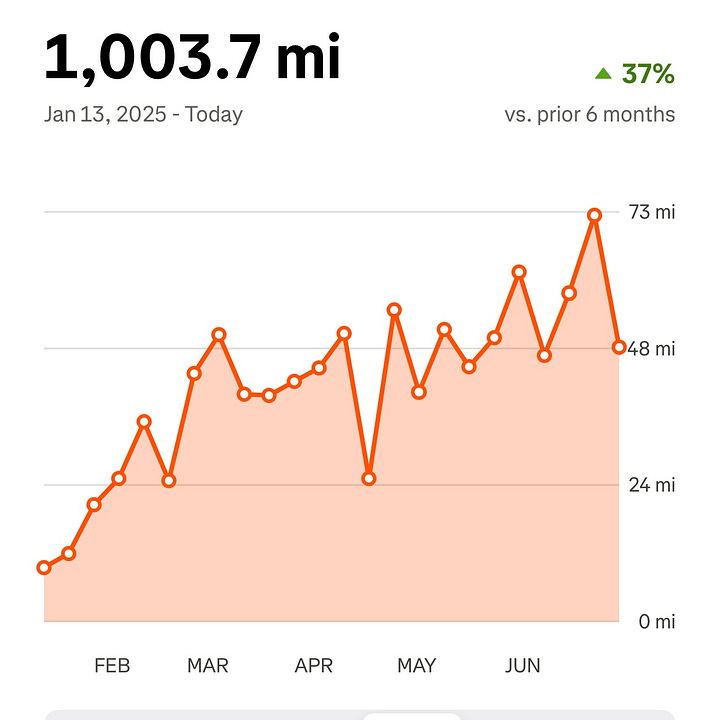
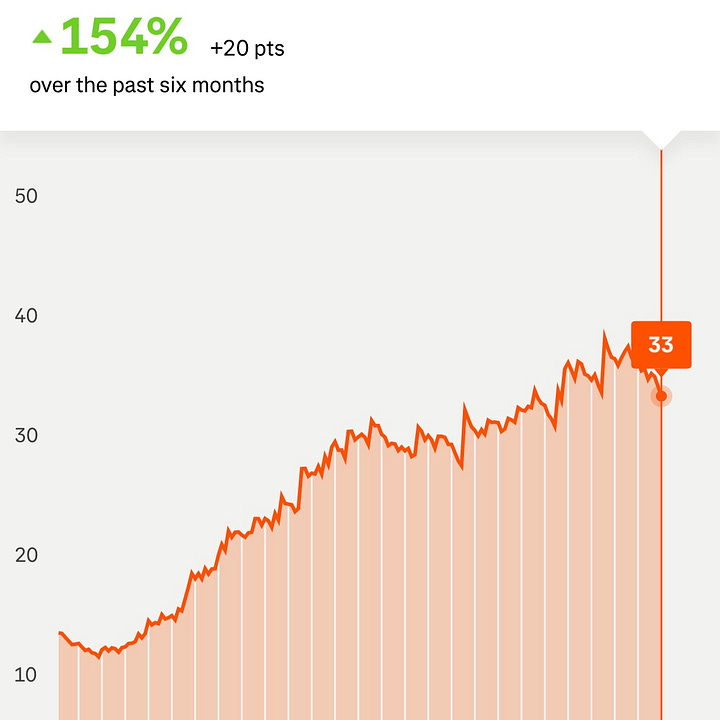
Two days from now, I’ll stand on the start line feeling as ready and confident as I can.
I used to say, “I wish my name got pulled for Hardrock when I was in my mid-40s instead of my mid-50s.” But I no longer feel that way. Sure, I definitely was faster a decade ago, when I earned a silver buckle for a sub-24 finish at Western States. Back then, I didn’t need to tape my knees for stability, nor did I need to cut back my running volume to make time for strength and mobility sessions at the gym. I certainly didn’t need as much sleep and didn’t nap so frequently. At 56, I feel I’m chronically managing and repairing my older body like an old car to keep it running.
But Hardrock rewards patience and experience. Its rugged, often un-runnable terrain demands a tortoise pace and a coolheaded mindset. This fact plays to my strengths.
My body’s engine ran faster in my mid-40s when it had more oxygen-carrying capacity and natural hormones. A decade later, however, I’m smarter. I’m more experienced at preventing or troubleshooting problems on the trail, and more educated about the challenges of the Hardrock course, both from covering parts of it myself over the years but mainly from observing competitors while pacing them or helping them at the aid stations where I volunteered. If Hardrock is a “graduate-level” ultra, as it’s often characterized, then I might qualify as a PhD candidate given all the studying I’ve done. Having felt resentful of the long-odds lottery for so many years, I now feel grateful for the experience and education gained while waiting.
I also feel relatively young—or at least, not too old—because Hardrock attracts several older runners by virtue of how its lottery works (making never-rans like me wait for many years, and rewarding past finishers with better odds to re-enter).
I can look up to and feel inspired by a remarkable group of six female Hardrock competitors who are 60 or older: the Hardrock veterans Betsy Nye (60), Becky Bates (63, my profile on her), and Tina Ure (65); and first-timers Junko Kazukawa (61, my profile on her), Ann Ongena (61), and Elaine Stypula (60, the only one on this list I haven’t yet met). I want to mention these women—and encourage following their progress as Hardrock unfolds—because the media coverage will focus on the frontrunners and overlook the midpack oldsters (although Becky may be a frontrunner too!). To me, the oldsters have more grit and will be challenged more than frontrunner-favorites because they’ll be out on the course nearly twice as long.
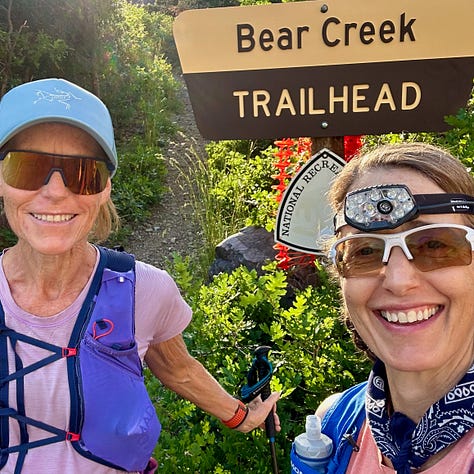
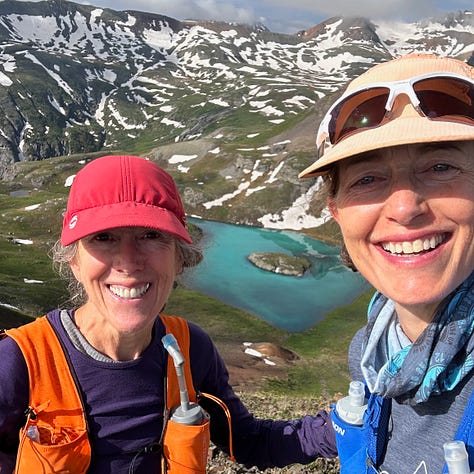

Finally, I want to introduce and publicly thank my awesome crew, and the sports nutritionist Kylee Van Horn who’s been instrumental in fine-tuning my nutrition and hydration (described here). What a team!
From Animus Forks to Telluride, I’ll be paced by Suzanna Bon (here’s my profile of her finishing top-10 in Tor des Geants). We’ll be crewed in Ouray in the middle of the night by Cristal Hibbard (my profile on her; she also paced me in Run Rabbit Run 100). Cristal will pace me from Telluride to Chapman Gulch in Ophir. Finally, my friend Sophie Speidel (profile of her) will pace me from Chapman Gulch to the finish. Along the way, my friend and former pacer Clare Abram (who’s not pacing due to injury recovery) will help my husband Morgan handle crew logistics and get to where they need to be on time. Best of all, my daughter Colly will show up for support in Telluride and Ophir. I’ve also asked Colly to post some pics to my Instagram story during Hardrock, so you can see them @sarahrunning.

Now, I gotta double-check my dropbags, muck out the horses’ paddock, and hit the road to Silverton, where I’ll spend two nights before starting Hardrock. I’m speaking on the second panel featured in the Women of Hardrock event from 2:30 - 4pm Mountain today (Wednesday, July 9), which will be livestreamed on the Hardrock channel if you’d like to watch.
Podcasts I heard this past week and recommend:
This episode by Your Diet Sucks on ketones is super well-researched and wise. Too many endurance athletes are wasting money on this hack instead of leveraging the no-cost things that will do much more to improve performance (e.g. more sleep, consistent training). Their thoughtful and also funny episode shares the definitions and different types of exogenous ketones, plus the risks, the few positives, and the history of the over-hyped supplement.
The Trail Network’s postmortem on Western States. I particularly like the intelligent commentary of Hilary Yang and Leah Yingling as they reflect on the media growth and bigger crowds.
Thank you for reading and sharing this newsletter! This week, I crossed another milestone in subscribers, the 4000 mark. I’ve grown by a little more than 1000/year, thanks to all of you.
Some photos from training on the Hardrock route:

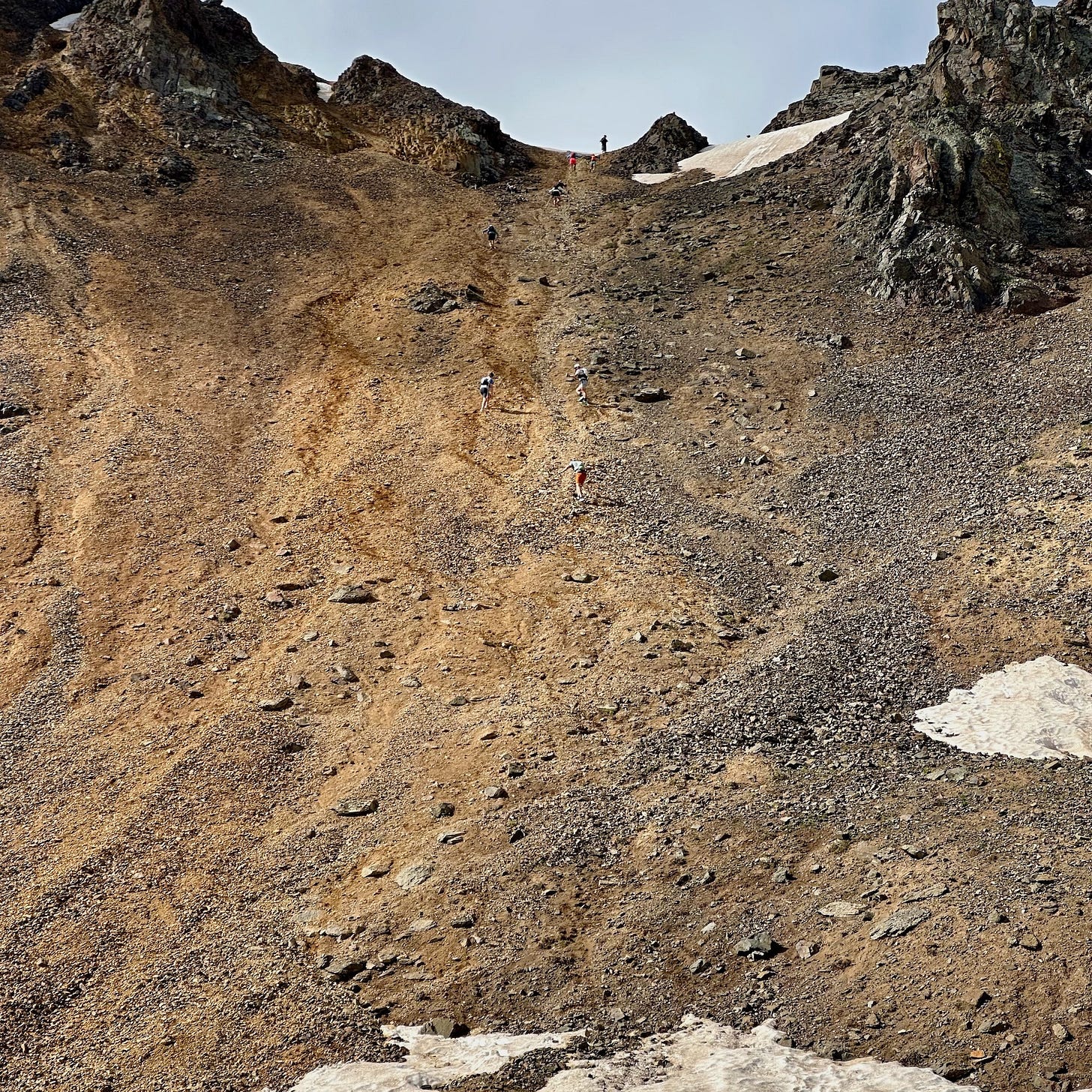
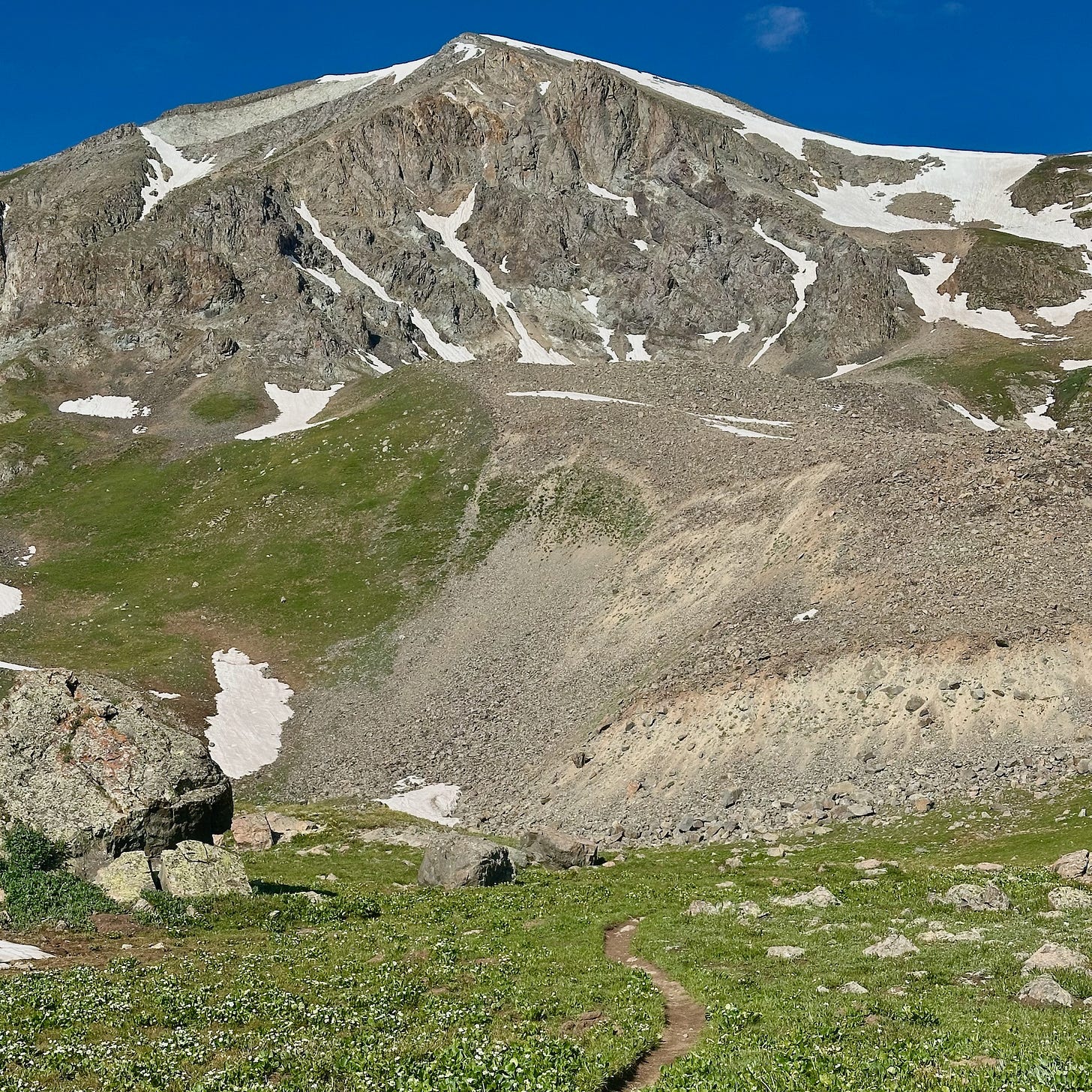
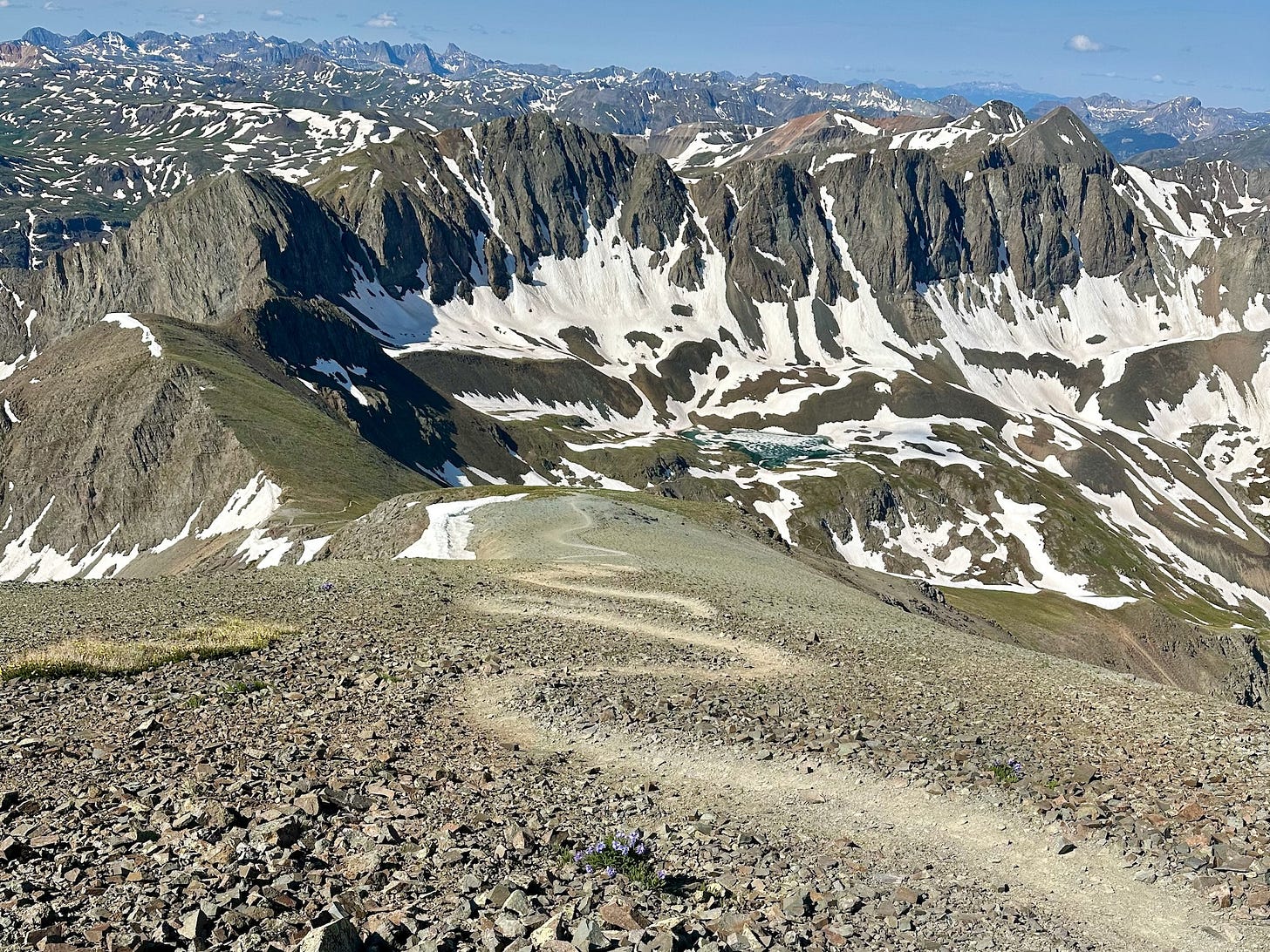
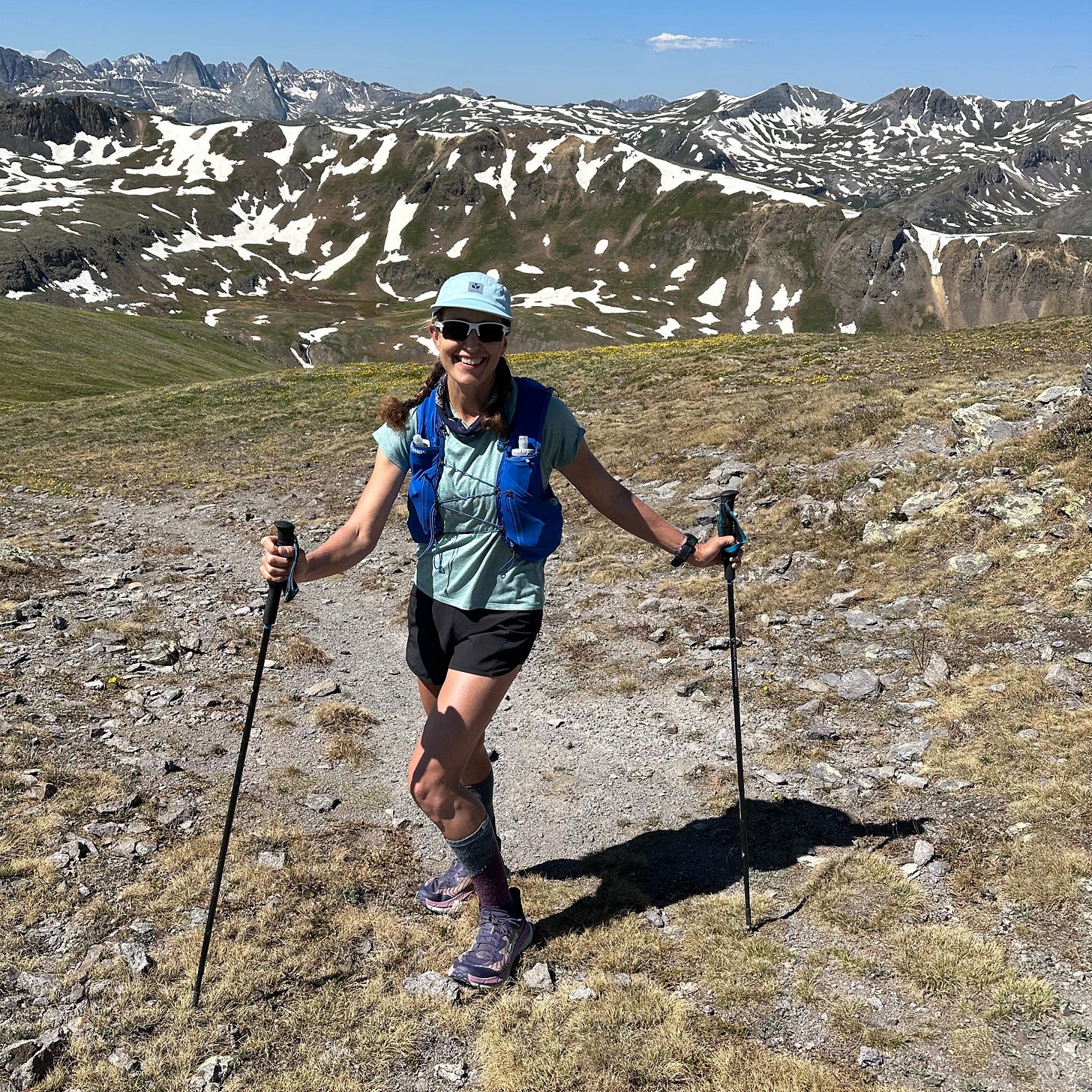
And lastly: marmots, marmots everywhere. I love them.




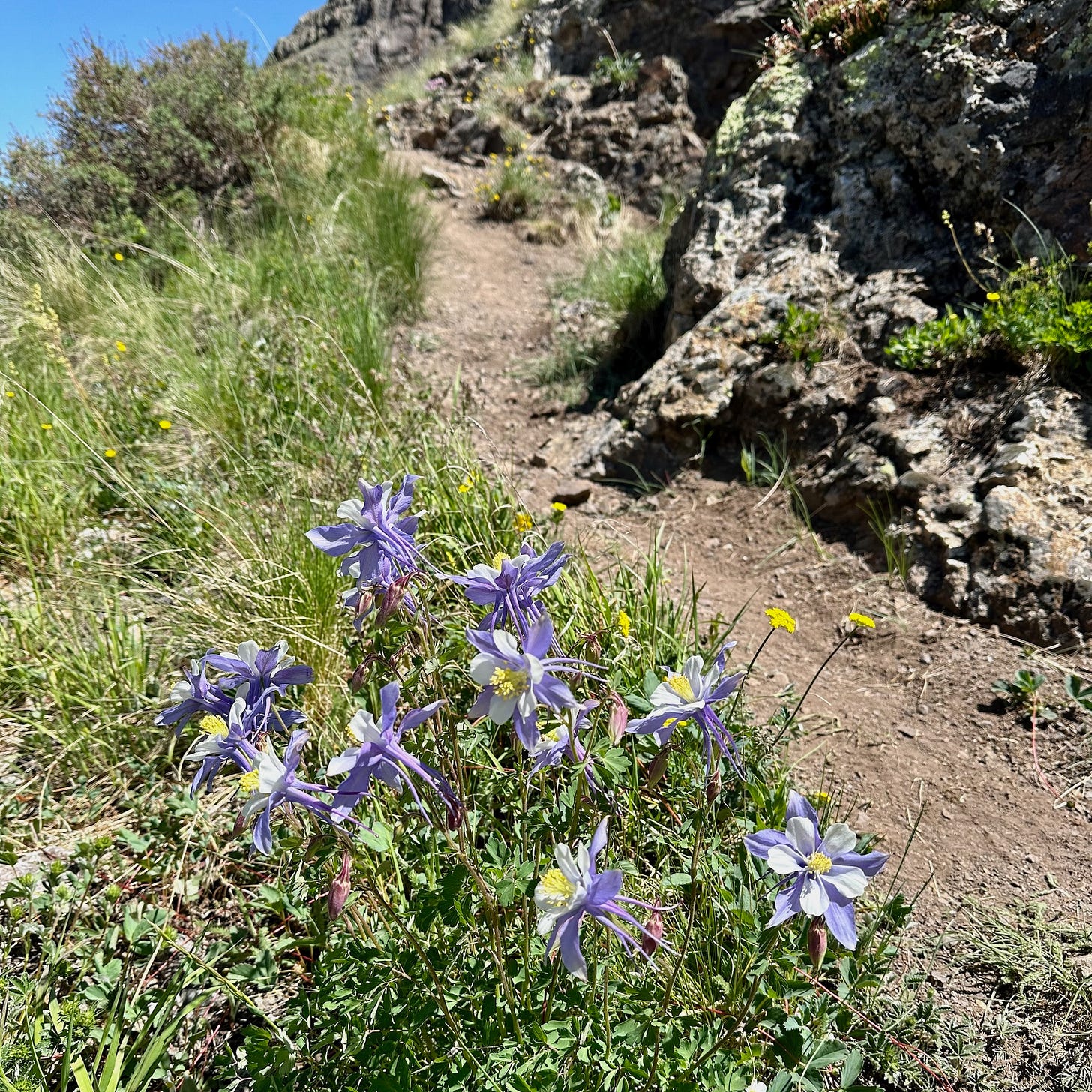

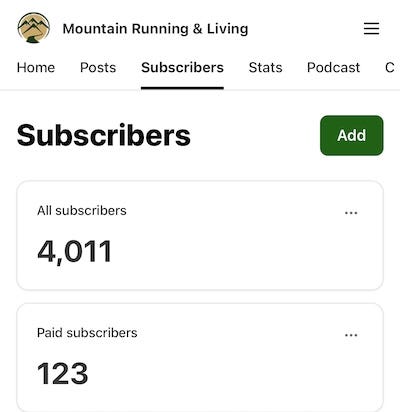
Let’s go Sarah!
Thank you for the resources and the highlights on the six 60+ women who will be running, I will definitely be tracking them and cheering you all on from afar! Best of luck with your run, and I hope you enjoy every step!